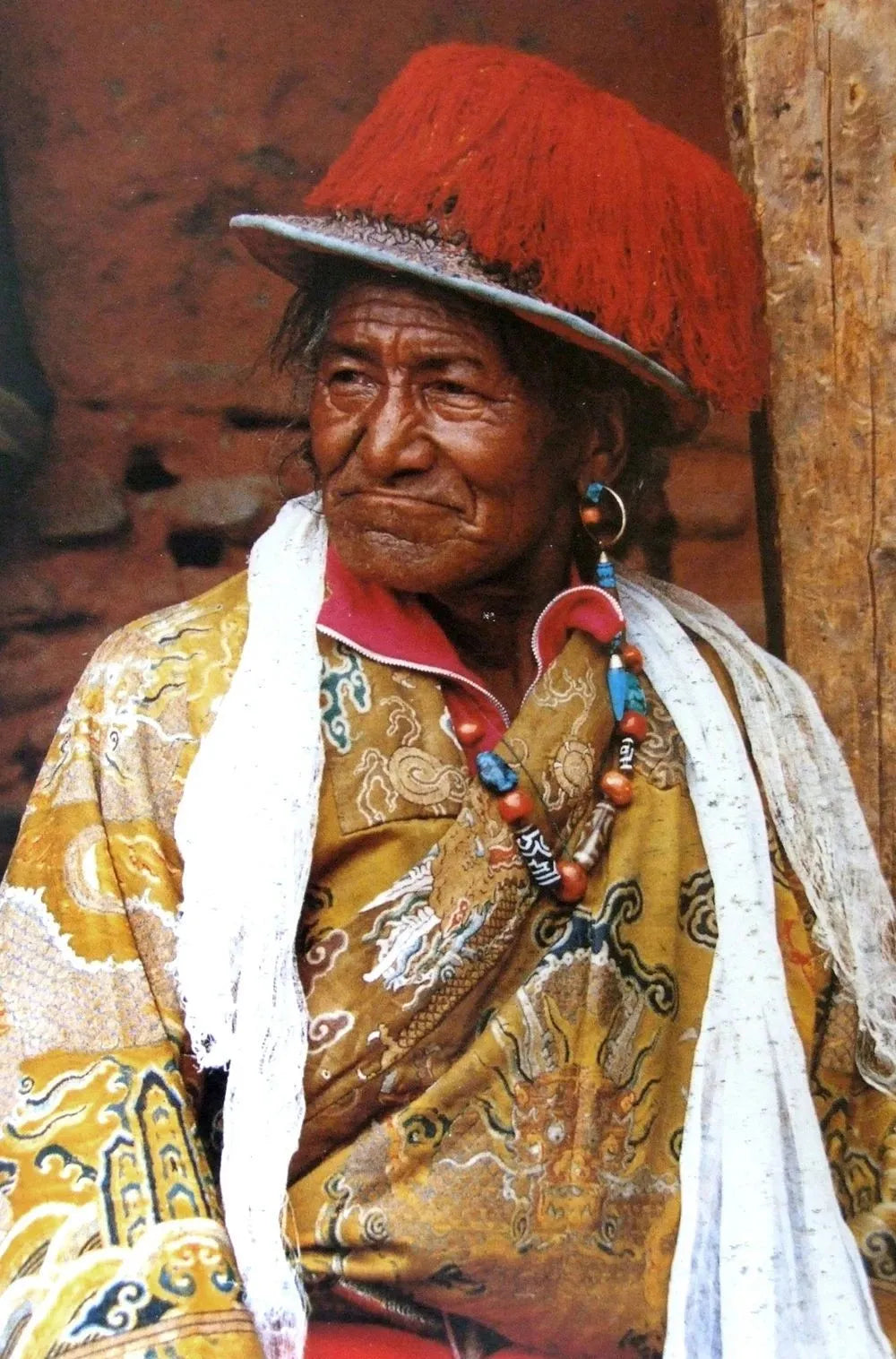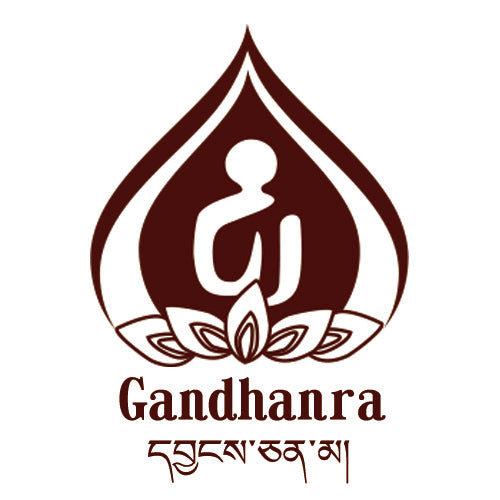
Tibetan Hats: Flying Black Hat, Red Hat from Mongolia

Image source: Ethnical Clothing Museum.


Hat, it's a kind of culture.
There is a Tibetan proverb that says, "Do not put a black hat on a person of innocence"(མི་དཀར་པོར་ཞྭ་མོ་ནག་པོ་མ་གཡོག) and "A smooth person loses their hat"(མགོ་བདེ་པོས་ཞྭ་མོ་བརླག), suggesting that the hat holds deep cultural significance. Indeed, not only
Compared to many ethnic groups in the world, the hat culture in Tibet is definitely long-standing and diverse. Modern scholars have pointed out that there are about 140 different types of hats in the past Tibet alone. Traditionally, Tibetan hats are broadly classified into summer hats (དབྱར་ཞྭ) and winter hats (དགུན་ཞྭ) based on the seasons. However, Tibetan hats can also be classified based on different occupations, such as the monk's hat, artist's hat, official's hat, and so on. Even within the monk's hat category, there are different styles based on different sects and ranks. Similarly, official hats have different styles based on different ranks, not to mention that individuals may wear different hats for different occasions.

The Zanpu with the Buddha on his head and his turban
The history of Tibetan hats can be traced back to the Tubo period, with Songtsen Gampo's head wrapped in cloth as a representative example. There is a familiar and firmly believed legend among the Tibetan people, as recorded in the "Zhu Jian Shi": "Guanyin Bodhisattva decided to incarnate as the Tubo Zanpu to educate the subjects there, so he was reborn as Songtsen Gampo... What is particularly miraculous is that in his thick black hair, there grew a head of the Amitabha Buddha. King father Nari Songtsen, fearing that the strange phenomenon of Songtsen Gampo would be misunderstood by outsiders, used a red silk strip to wrap up the image of Amitabha Buddha on his head during the day." However, modern scholar Gendun Qunpei stated in his "White History": "At that time, the country most closely related to Tibetans was Persia, among whose people not only Buddhism flourished, but also the most learned and virtuous. It seems that the Tibetan king and ministers at that time were influenced by the customs of Persia, with legends of King Songtsen wrapping his head with red silk, wearing a colorful satin cloak, and sharp leather shoes, all of which are similar to Persian customs."

It is worth mentioning that although literature generally describes the chieftain's headgear as red, there are also many later sculptures that depict it as white. Some explanations suggest that white color can better highlight the complexion of the Buddha atop the head. Several famous murals in the Dunhuang Mogao Caves depict the Tubo chieftain, known as the "Tubo Chieftain Offering to the Buddha." In these murals, the chieftain is depicted wearing a red headgear. Scholars refer to it as the "Zanskar Hat," also known as the "Morning Glow Crown" (although there is some debate, it is clear that these two forms are similar). In any case, it can be confirmed that early Tubo royalty and nobility used headscarves to wrap into cylindrical or tower-shaped headdresses, a style that was not unique to Tibet but had a long history of cultural exchange and dissemination. More importantly, this kind of headgear is "a transitional period from headscarves to hats, and a prototype of the development of Tibetan hats" (Wang Hao: "A Study of Traditional Tibetan Hats").

Image source: Internet
Red tasseled hat from Mongolia
The change of dynasties led to different regional exchanges, which in turn promoted different cultural developments. Clothing culture is no exception. After the fall of the Tubo Dynasty, the Ali Kingdom briefly experienced glory and developed a unique ethnic clothing through the integration with neighboring Central Asian ethnic groups. During the Yuan Dynasty, a large amount of Mongolian culture entered Tibet, leading to the emergence of many Mongolian-style Tibetan hats. The Red Tassel Hat is a typical representative of this style. Known as "Sosha" (སོག་ཞྭ། Mongolian hat) by the Tibetan people, it was originally favored by nobles and aristocrats, but interestingly, it later became the hat of knights and servants. Even today, during Tibetan festivals, we can still see the presence of these hats.

Collection of the Ethnic Clothing Museum at Beijing Institute of

"The Tibetan Chronicles" Original Text
However, from an earlier period, the Han Chinese official system and clothing culture had a significant influence on Tibet, mainly due to the exchange between the interior and Tibet during the Ming and Qing dynasties. At that time, the Qing Emperor stipulated that the colors of the Tibetan dukes' clothing should be consistent with those of Qing officials. In addition, the Fifth Dalai Lama actively promoted noble ceremonial dress and strict attire, making it a peak period for the emergence of hat culture in Tibetan areas (especially in Ü-Tsang). Hats such as the Kangda hat (ལྕགས་མདའ), Bo hat (འབོག་ཞྭའམ་ཞྭ་འབོག), as well as the earlier Tubir (ཐུ་པི་ལི) hat influenced by Mongolia, and the later Gesang Sezhuo hat (བསྐལ་བཟང་བསིལ་གྲིབ) appeared during this period.
The Kangda hat, transliterated from Tibetan, can be directly translated as the iron ring hat based on its meaning. It is flat and round with a red tassel on the top. It is a summer hat worn by former high-ranking officials (those with a rank of at least four grades according to the Han Chinese official system), and is also part of the attire of emperors and princes in Tibetan operas.

Boma is the official hat worn by Tibetan officials below the fifth rank in ancient times. It is a yellow, round hat made of wool, initially popular in the regions of western Tibet. The design was originally wide and later improved to become small and compact, with a wide top and a narrow bottom.

Image source: Wikidata.

Gesar Tsering is translated from Tibetan, meaning "lucky canopy". It is said to have been designed by the Seventh Dalai Lama and named after him. As the name suggests, this hat is mainly used during the hottest summer months.

Draw clouds on the hat.
In addition to these hats, another more famous and representative Tibetan hat is prevalent—the Tsereing Kyin (ཚེ་རིང་སྐྱིན་ཁེབ), which is an essential traditional attire for activities in the Amdo region today. Tsereing Kyin, meaning longevity in gold thread, is made from high-quality Tibetan wool and fur as raw materials, with gold thread bands or colorful brocade as decorations. Various auspicious patterns are embroidered with gold thread on the top of the hat, and the edges are trimmed with gold thread or gold brocade. The hat has four petal-shaped brims, with the front and back brims larger and the side brims smaller... Young men mostly leave only the back brim when wearing it, folding up the side and front brims, looking handsome and elegant; Women usually leave only the side brims outside when wearing it, folding up the front and back brims, appearing youthful and beautiful. When worn by the elderly, they prefer to spread out all four brims, resembling a bird spreading its wings or an inverted flower bud" (Wang Hao said).

Storing in the National Costume Museum of Beijing Institute of Fashion Technology
This type of hat is also known as the "golden flower hat", as mentioned above, the summer hat worn by Porone in the previous text is of this type, and that period was also the peak of the popularity of this hat. However, the history of the golden flower hat in Tibet dates back much earlier than the Qing Dynasty, tracing back to the Tubo period. According to legend, Princess Wencheng once attended a dance banquet at the Potala Palace. She gazed at the distant mountains where a few wisps of clouds were intertwined, and she was inspired to wear clouds on her head, giving birth to this hat.

A flying black hat
We often hear about the practice of distinguishing Tibetan sects by the color of their hats. Although this simple distinction is often criticized and rightfully so, it is not entirely without reason. The Gelug sect, known as the "Black Hat sect", is named after their leader, the Gyalwa Karmapa, who wears a unique black hat. There is a magical legend about this hat: Avalokiteshvara once crowned the rare pleasure master with a black hat woven from the hair of ten thousand Dakinis over countless eons. As a result, all incarnations of the master have worn this hat. It is believed that if the owner of the black hat does not hold onto it tightly, the hat will fly away.

In fact, during the Ming and Qing dynasties, there was close cultural exchange between Tibet and the mainland, with Tibetan lamas occasionally invited to the mainland to teach Buddhism. The second Karmapa Lama was received by the Yuan emperor, and the fifth Karmapa Lama was invited by the Yongle Emperor. Although it is widely believed that the second Karmapa Lama was granted the black hat by the Mongol Khan of the Yuan Dynasty, the evidence in the literature is not clear, and more evidence suggests that it was the third Karmapa Lama, Rangjung Dorje, who first wore the black hat (as proposed by Xie Jisheng, citing the "Red History" as evidence).

17th century work
Image source: Himalayan Art
Yellow Hat of Rigorous Discipline
In addition to the Black Hat, another well-known sect is the Yellow Hat Gelug sect, which is named after the sect's distinctive yellow hat with a fan-shaped chicken crest. This hat was instituted by the founder of the Gelug sect, Tsongkhapa, but its origin can be traced back to the period just after the dissolution of the Tubo Kingdom. At that time, in order to revive Buddhism, ten monks from Ü-Tsang went to seek teachings and returned with the yellow hat bestowed upon them by the master for one of the ten monks named Lume. The master explained that this hat was inspired by the ancient Bon religion, where blue hats were covered with yellow soil, and should be worn as a symbol of strict adherence to the teachings and disciplines. Tsongkhapa continued the tradition of using this hat as a way to uphold the strict moral code.

Collection of National Costume Museum, Beijing Institute of Fashion Technology

As a cultural symbol, the hat
References:
Wang Hao: "Study on Traditional Tibetan Hats"
Xie Jisheng, Caireng Zhuoma: "A Study on the Origin of Black Hats of the Gama Jushang Shi in Tibetan Buddhism"
Roujin Cuomao: "Interpretation of Monk Hats in Tibetan Buddhism"
Bai Yufen: "Tibetan Folk Culture"
Shang Erbin: "Tibetan Clothing in the Historical and Geographical Environment of the Qinghai-Tibet Plateau"
Yun Li: "Tibetan Chronicles"

